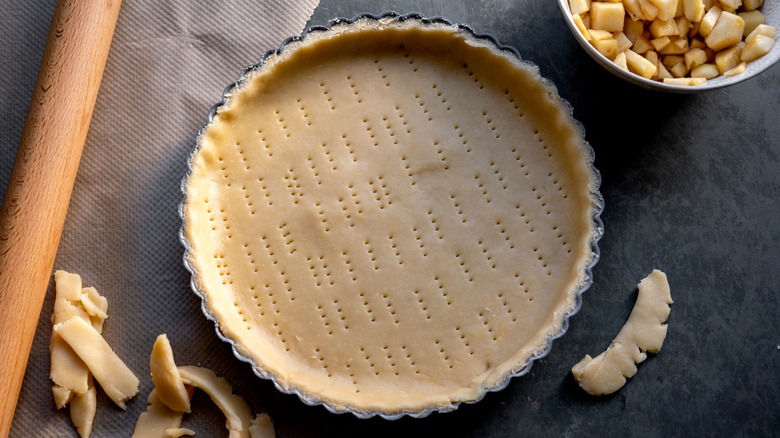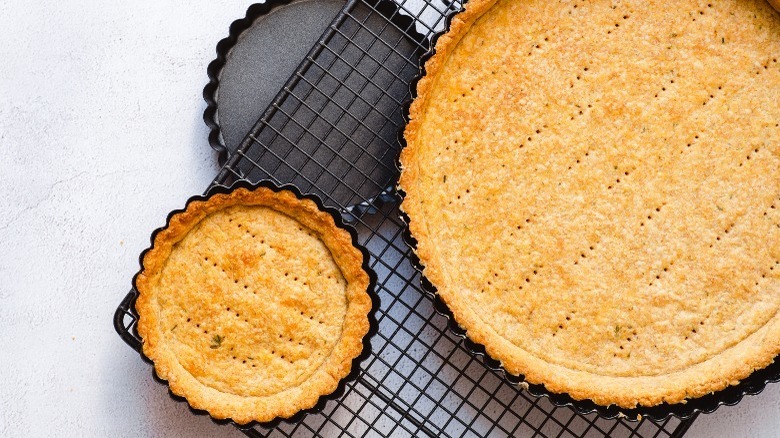The Pantry Ingredient To Start Using When Blind Baking Pie
Pies are usually famous for their fillings, from fruit pies like fresh cherry to custard pies like creamy key lime. But even though it's normally what's on the inside that counts, a pie's exterior can truly make or break the dessert. So much care and flavor go into pie crusts, so it's important to give them the best baking treatment possible. Of all the pie crust baking techniques, blind baking can be one of the toughest to get right. Without properly weighing down your pie crust, it could end up puffy, warped, and burnt — but if you aren't ready to commit to metal or ceramic pie weights, using common pantry ingredients is an easy, cost-effective way to ensure an evenly blind-baked crust.
So, how do you guarantee a beautifully golden crust every time? The secret is probably in your pantry right now. For a perfectly browned blind bake, just use aluminum foil and granulated sugar. Aluminum foil is an excellent weight barrier and heat conductor, and the incredibly fine texture of sugar fills in all of a pie crust's buttery nooks and crannies. Sugar's surprising heft evenly distributes pressure across the crust for a balanced bake. Every baker keeps their pantry well stocked with sugar, so this technique is great for people who want an amazing crust, without the bulky beans or expensive pie weights.
The sweet method for a perfect crust
Unlike par-baking a crust, blind baking completely separates the pie filling from the baking process. This method is common for custard pies, like a coconut cream or any other pie that has a no-bake filling. Because there's no filling to weigh down the crust as it bakes, you have to add weights to achieve the right shape and crunchy consistency. You might have tried replacing pie weights with uncooked rice, dried beans, or even loose change, but the best blind baking method is actually a little sweeter.
Tiny granules of sugar provide full crust coverage and compact the dough more than larger, lighter pantry ingredients like rice and beans. Beans can dent the bottom of your crust, making for an uneven bake. Rice is more fine, so it's closer to the successful result of sugar, but ends up being wasteful since it's not recommended to cook or eat the rice after blind baking.
Not only does sugar as a pie weight yield the best result, but it's the most efficient. After baking, you'll have a perfect pie shell and some freshly toasted sugar — a wonderful ingredient you can repurpose in the filling or elsewhere. Toasted sugar has a rich, caramelized flavor that will add delicious depth to your recipe. Sugar melts at 367 degrees Fahrenheit, so as long as you blind bake your crust at around 350 degrees Fahrenheit, you'll have an easy, extra yummy ingredient to add to your filling.

